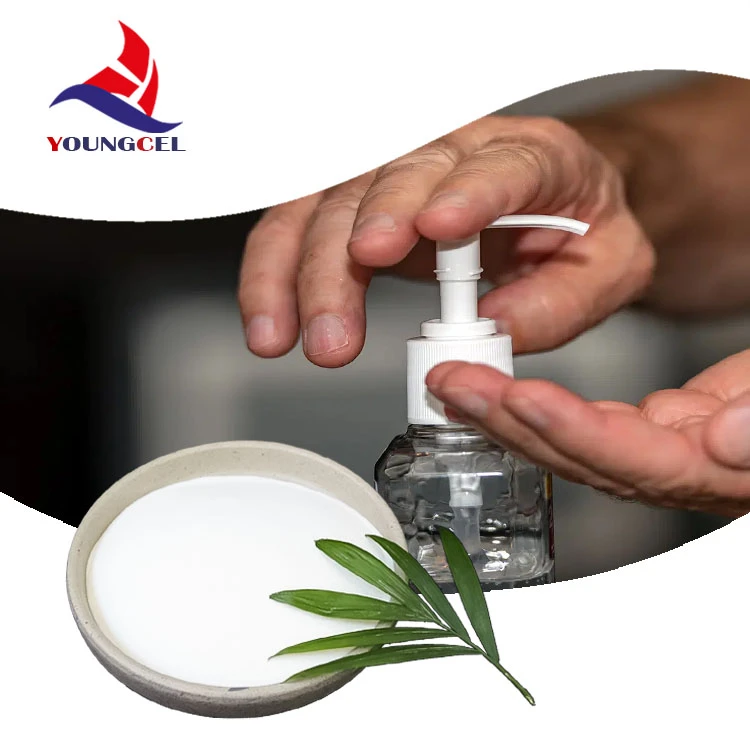Hydroxypropyl Methyl Cellulose (HPMC) A Versatile Polymer in Various Applications
Hydroxypropyl Methyl Cellulose (HPMC) is a versatile cellulose derivative widely used in various industries due to its unique properties. As a non-ionic, water-soluble polymer, HPMC is produced by the chemical modification of cellulose—a natural polymer derived from plant cell walls. The introduction of hydroxypropyl and methyl groups enhances aqueous solubility and modifies the polymer's rheological characteristics, making it an invaluable ingredient in pharmaceuticals, food, construction, and personal care products.
Hydroxypropyl Methyl Cellulose (HPMC) A Versatile Polymer in Various Applications
In the food industry, HPMC is utilized as a food additive, providing thickening, emulsifying, and stabilizing properties. It is commonly incorporated in low-fat and gluten-free products to improve texture and mouthfeel. HPMC can mimic the properties of gluten, making it an essential ingredient in providing structure and elasticity in baked goods without the adverse health effects associated with gluten for those with intolerances. Its ability to retain moisture makes HPMC an effective tool for extending the shelf life of food products while maintaining quality.
hydroxypropyl methyl cellulose (hpmc)

The construction industry also benefits from HPMC, where it is used as an essential ingredient in mortar and tile adhesives. When added to cement-based materials, HPMC enhances workability and provides better adhesion, thereby improving the ease of application and the final strength of construction materials. Additionally, its water retention properties help to prevent rapid drying, allowing for longer working times and minimizing the risk of cracks in the finished product. Given the growing demand for efficient and durable construction materials, the role of HPMC continues to expand.
In personal care products, HPMC is commonly found in a range of applications, including shampoos, lotions, and creams. Its thickening and emulsifying properties contribute to product consistency and stability. Furthermore, HPMC's gentle nature makes it suitable even for sensitive skin formulations. Its capacity to form a film on the skin or hair enhances the moisturizing effect, thereby improving overall user experience.
As sustainability becomes increasingly important in various industries, HPMC stands out as a biodegradable and environmentally friendly option. Derived from renewable resources, its production aligns well with sustainable practices, making it an increasingly attractive choice for manufacturers seeking to minimize their environmental footprint.
In conclusion, Hydroxypropyl Methyl Cellulose is a multifunctional polymer with broad applications across numerous industries. Its unique chemical properties enable it to serve effectively as a binder, thickener, emulsifier, and stabilizer. Whether in pharmaceuticals, food, construction, or personal care products, HPMC enhances product performance while contributing to improved user experience. As industries continue to innovate and adapt, the demand for versatile and sustainable ingredients like HPMC will undoubtedly grow, solidifying its role as an essential component in modern formulations.
-
Rdp Powder: Key Considerations for Wholesalers in the Building Materials IndustryNewsJul.08,2025
-
Key Considerations for Wholesalers: Navigating the World of Hpmc - Based ProductsNewsJul.08,2025
-
Hpmc Detergent: Key Considerations for WholesalersNewsJul.08,2025
-
Key Considerations for Wholesalers: China Hpmc For Tile Adhesive, Coating Additives, Concrete Additives, and MoreNewsJul.08,2025
-
Crucial Considerations for Wholesalers: Navigating the World of Construction MaterialsNewsJul.08,2025
-
Key Considerations for Wholesalers Sourcing Additive For Cement, Additive For Concrete, Additive For Putty from Additive Manufacturer Shijiazhuang Gaocheng District Yongfeng Cellulose Co., Ltd.NewsJul.08,2025




